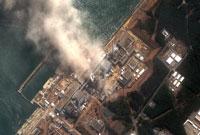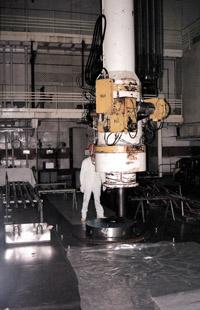Nuclear... yes?
2007/12/01 Galarraga Aiestaran, Ana - Elhuyar Zientzia Iturria: Elhuyar aldizkaria
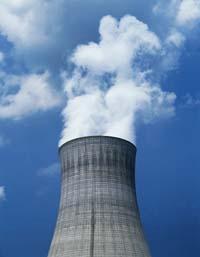
In recent years no nuclear power plants have been built in Europe or the US. However, a plant is currently being built in Finland and the possibility of doing more in other countries is being studied. Why now? It is no coincidence, it is related to climate change.
Scientists have clear indications that the climate is changing and repeatedly warn that this can have serious consequences. Some scientists have also said it is too late to deal with it, but they believe -- and all agree -- that greenhouse gas emissions must be reduced. With this intention the Kyoto Protocol was born.
There are several options for reducing gas emissions, such as reducing energy consumption, improving the efficiency of the systems currently used and managing emissions, and using other energy sources that do not emit greenhouse gases. These include most renewable energies (solar, wind, geothermal, hydraulic, marine) and nuclear energy.
Smokeless plants
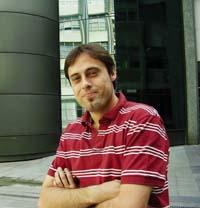
That is why nuclear power has been strengthened in recent times, as the power plants do not emit polluting gases into the atmosphere -- the cloud coming out of nuclear power plants is not smoke but water vapor. Igor Peñalva, professor of the Department of Nuclear Engineering and Fluid Mechanics at the UPV/EHU Higher Technical School of Engineering in Bilbao, believes that this is the main advantage of nuclear power plants against other energy production systems.
In addition, for those who bet on nuclear power plants, this type of energy has other advantages such as price. According to Peñalva, "the electricity generated by nuclear power plants is very cheap. For example, wind energy is now being powered, and yes, it is a renewable and clean energy, but today it is very expensive. We should know if people are willing to pay that price." In fact, about a quarter of the electricity consumed in the Basque Country is produced in nuclear power plants (the data from Navarra lowers the average, where wind power has a great force), so "the bill would be enormously charged if all the electricity consumed was obtained from renewable energy".
Otherwise, even if electricity is willing to pay more expensive than now, renewable energy could not produce enough. Electricity is not cumulative on a large scale, and wind turbines and solar panels only produce electricity when conditions are adequate, so it is not possible to ensure that the necessary electricity is available at all times. On the contrary, nuclear power plants work constantly, with a stop of one month every year or year and a half, to change the fuel, but otherwise they produce electricity 24 hours a day, without incident.
Finally, raw material is also considered an advantage by nuclear energy supporters. The price of uranium is more stable than that of fossil fuels, the most important mines are in politically stable countries (Australia, USA, Canada), are booked for decades and start looking for new stores.

However, uranium is as bad as it is good as raw material: it is not inexhaustible and will become more expensive as it is reduced, the mines are in certain places and their property can cause problems, its use in plants requires enrichment and not all countries have the necessary technology for it...
The problem under the feet
However, waste and safety are much more serious problems than raw materials. Also supporters of the use of nuclear energy recognize that these are the main disadvantages of this type of energy. Peñalva also agrees with this, but believes that “the essence of both problems is political and social, not technological. In fact, both are technologically resolved."
The solution to waste is a deep geological storage. That is, take for thousands of years waste that will release radioactivity and bury them in a geologically stable area, at great depth and totally controlled. The truth is that nowhere have they kept it yet. At the moment, within each plant are the waste generated from its commissioning. In most of the central areas of the area are located in the inactivation rafts. In the pond, the water absorbs the radiation and heat released during the disintegration of radioactive materials and, in passing, decreases the level of radioactivity.
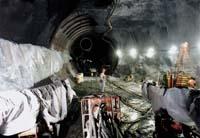
However, the time has come for its underground storage and each country must choose the right place for it. But this is not easy, as no one wants such a thing under his feet. However, there is no better solution and USA. and Finland have already decided where to make the warehouses and start building them.
There are other options. On the one hand, waste can be reused after proper treatment. There are several projects for the reuse of the radioactive material used, which would allow a greater use of the raw material and a lower level of radioactivity of the final residues compared to the previous ones.
On the other hand, there is transmutation. This aims to convert products that emit radiation for a long time into elements that stabilize much earlier. To achieve this, several groups of researchers are working, but they have not had good results yet. Therefore, burying in the place and the safest way possible is, for the moment, the best solution.
The ghost of the chernobiles

Another serious problem of nuclear energy is security. Twenty years have passed since the Chernobyl accident, but the consequences persist and people have not forgotten it. However, experts consider it impossible for Chernobyl to repeat itself. In the words of Peñalva, "currently the European Union and US plants have extremely demanding security measures and it is almost impossible for an accident to occur such as the one in Chernobil. But whatever happens, there would be no radioactivity outside, it would be inside the concrete walls of the power plants."
There is an example of this. In 1979, in Harrisburg, United States, there was an accident similar to the one that occurred later in Chernobyl, but the consequences were much lower, due to the proper functioning of the security measures. Currently, nuclear power plant managers claim that the risk of these accidents is much lower, since every step of the process is fully controlled. However, in case of an accident, there would be no radioactivity leakage, since for this case specific measures are also available.
From generation to generation
In addition, the plants being built now and those that want to build in the coming years are better than the current ones. In the 1950-1960's the first nuclear power plants were launched in the US and the Soviet Union. They were called first generation. Those carried out later, between 1970 and 1980, belonged to the second generation, and so are the majority of those who work now, as is the case of Garoña. Uranium is an enriched fuel that uses water to capture the heat of the fission reaction and moderate the reaction.

After them came the third generation. They are based on the above and have improvements, especially in security. To reduce the risk, they do not usually incorporate more or less security measures, but the system itself is safer, thus reducing the risk of any accident. In addition, they get higher fuel performance, that is, they are more efficient and the plants themselves are more compact to be cheaper. The plants that are currently being developed in Japan, Tawain and Europe and that want to launch you for 2010 will be of this type. A new plant has been developed in the South African Republic. The cooling system and operating mode of the reactor are different and seems appropriate to produce hydrogen.
But the nuclear industry looks further and there are two international initiatives to build innovative power plants by 2030: GIF (Generation IV International Forum), and INPRO (International Project on Innovative Nuclear Reactors and Fuel Cycles). They are called fourth generation and are also oriented to the production of hydrogen, a very clean and useful medium of energy storage, which foresees important applications in the future. For example, it can also be useful in transportation.
Dreams and Truth
All nuclear power plants mentioned so far use the energy generated by nuclear fission. There is another type of nuclear energy: nuclear fusion. The energy of the Sun is generated by fusion reactions. That is, two nuclei join together forming a nucleus whose mass is less than the sum of both, releasing the lost mass as energy. Raw materials are simple, no hazardous waste is left and a huge amount of energy is released. Now we are investigating how this reaction can be carried out in a simple and controlled way and then how to convert the detached heat into electricity.
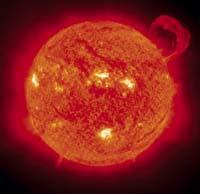
It is a dream: clean and inexhaustible, unlimited. But it is doubtful if it will come true. However, the current energy model cannot be maintained for a long time either. All the cards are at stake: renewable energies, nuclear and fossil fuels; precisely, when oil is exhausted, coal has gained strength... The question is who will drive the game and what will you decide.

Gai honi buruzko eduki gehiago
Elhuyarrek garatutako teknologia



